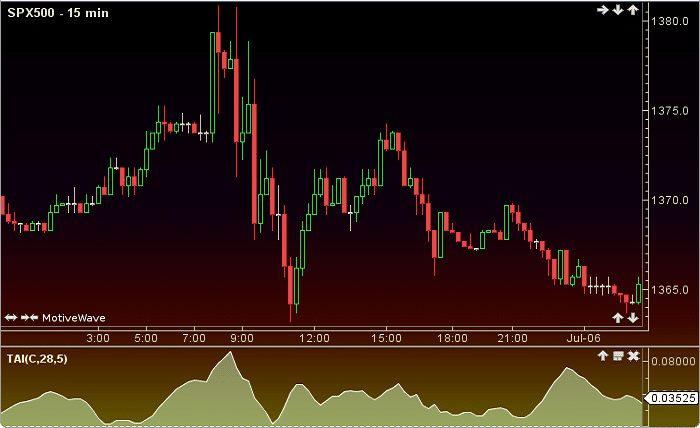Trend analysis is a powerful tool for identifying patterns, predicting outcomes, and guiding decision-making across industries. By evaluating historical data and current trends, businesses can anticipate future opportunities and challenges. This process enables companies to refine their strategies and maintain a competitive edge in an ever-evolving market.In today’s dynamic world, trend analysis is not limited to one industry. From fashion to technology, and finance to health care, understanding trends is crucial for success. As businesses rely on data-driven insights, trend analysis becomes a cornerstone of strategic planning.
The Importance of Trend Analysis in Modern Business
In the fast-paced business environment, trend analysis is vital for staying relevant. By analyzing trends, businesses can recognize shifts in consumer behavior, emerging market demands, and technological advancements. Ignoring trends can lead to missed opportunities and obsolescence.For instance, companies like Netflix and Amazon have used trend analysis to predict consumer preferences, tailor their offerings, and dominate their markets. Conversely, businesses that failed to adapt to trends, such as Blockbuster, serve as cautionary tales of neglecting trend analysis.
Key Components of Effective Trend Analysis
Trend analysis is a multifaceted process that involves several key components. To achieve meaningful results, businesses must focus on:
- Data Collection: Gathering accurate and relevant historical data is the foundation of trend analysis. This data can include sales figures, customer feedback, social media metrics, and industry reports.
- Identifying Patterns: Analyzing data to identify recurring patterns or anomalies is critical. This step helps businesses understand the trajectory of current trends.
- Forecasting: Using statistical tools and predictive modeling to project future trends is a vital component of trend analysis. It enables businesses to anticipate shifts and prepare accordingly.
- Implementation: Insights derived from trend analysis should inform strategic decisions, from product development to marketing campaigns.
Each of these components ensures that trend analysis provides actionable insights rather than just theoretical predictions.
Types of Trend Analysis
Understanding the different types of trend analysis can help businesses choose the approach that best suits their needs. The primary types include:
1. Market Trend Analysis
Market trend analysis involves studying industry-specific trends to identify growth opportunities and market demands. Businesses can use this to stay competitive and innovative.
2. Financial Trend Analysis
Financial trend analysis evaluates key financial metrics such as revenue, expenses, and profitability over time. It helps organizations identify strengths, weaknesses, and potential risks.
3. Consumer Trend Analysis
Consumer trend analysis focuses on understanding shifts in consumer behavior and preferences. By recognizing these patterns, companies can adapt their products and services.
4. Social Media Trend Analysis
Social media platforms are treasure troves of real-time data. By analyzing trends on these platforms, businesses can gauge public sentiment and predict viral trends.
Each type of trend analysis offers unique insights, making it crucial for businesses to adopt a comprehensive approach.
The Role of Technology in Trend Analysis
Technology plays a pivotal role in enhancing the accuracy and efficiency of trend analysis. Advanced tools and software have revolutionized how businesses analyze and predict trends. Key technological advancements include:
- Artificial Intelligence (AI): AI-powered tools can process vast amounts of data, identify patterns, and provide actionable insights.
- Big Data Analytics: Big data enables businesses to analyze diverse data sets, uncover hidden trends, and make informed decisions.
- Machine Learning: Machine learning algorithms improve the precision of trend analysis by learning from historical data and refining predictions.
- Data Visualization Tools: Tools like Tableau and Power BI simplify the interpretation of complex data by presenting it in visual formats.
These technologies empower businesses to conduct trend analysis more effectively, making it an indispensable part of their operations.
Challenges in Trend Analysis and How to Overcome Them
Despite its numerous benefits, trend analysis comes with its own set of challenges. Some common issues include:
- Data Quality Issues: Inaccurate or incomplete data can lead to flawed conclusions. Businesses should invest in robust data collection and verification processes.
- Overreliance on Historical Data: While historical data is valuable, relying solely on past trends can be misleading. Incorporating real-time data and market intelligence is crucial.
- Complexity of Tools: Advanced analytical tools can be intimidating for non-experts. Providing proper training and user-friendly software can address this issue.
- Rapidly Changing Markets: In volatile industries, trends can shift quickly. Regular updates and continuous monitoring are essential.
By addressing these challenges, businesses can harness the full potential of trend analysis.
Practical Applications of Trend Analysis
Trend analysis has diverse applications across industries. Some notable examples include:
- Retail: Retailers use trend analysis to forecast demand, optimize inventory, and identify popular products.
- Finance: Financial institutions rely on trend analysis to predict market fluctuations and assess investment risks.
- Healthcare: In healthcare, trend analysis helps in tracking disease outbreaks, patient preferences, and advancements in medical technology.
- Technology: Tech companies use trend analysis to anticipate shifts in consumer preferences and innovate accordingly.
These applications highlight the versatility and importance of trend analysis in achieving business success.
Future of Trend Analysis: Emerging Trends and Opportunities
The field of trend analysis is constantly evolving, driven by advancements in technology and changing market dynamics. Emerging trends in trend analysis include:
- Integration of IoT: The Internet of Things (IoT) will enable businesses to collect real-time data from connected devices, enhancing trend analysis.
- Predictive Analytics: Enhanced predictive analytics will provide businesses with more accurate forecasts, allowing for proactive decision-making.
- Increased Focus on Sustainability: Businesses are analyzing trends related to sustainability and environmental impact, aligning strategies with consumer expectations.
- Personalized Insights: Trend analysis is becoming more personalized, with tools offering tailored insights for individual businesses.
As these trends shape the future, businesses must stay informed and adapt their strategies accordingly.
Conclusion
Trend analysis is an indispensable tool for businesses aiming to stay ahead in competitive markets. By leveraging historical data, identifying patterns, and predicting future shifts, companies can make informed decisions and capitalize on opportunities. With the right tools, technology, and approach, trend analysis becomes a game-changer, driving growth and innovation across industries.
FAQs
1. What is trend analysis?
Trend analysis is the process of examining historical data to identify patterns and predict future behaviors or outcomes.
2. Why is trend analysis important?
Trend analysis helps businesses anticipate market changes, align strategies, and stay competitive in a dynamic environment.
3. What are the types of trend analysis?
The main types are market trend analysis, financial trend analysis, consumer trend analysis, and social media trend analysis.
4. How does technology enhance trend analysis?
Technologies like AI, machine learning, and big data analytics improve the accuracy, speed, and efficiency of trend analysis.
5. What challenges are associated with trend analysis?
Common challenges include data quality issues, overreliance on historical data, complex tools, and rapidly changing market dynamics.





